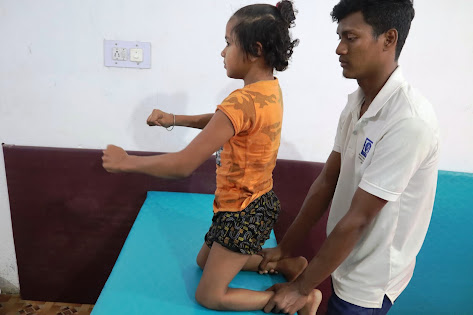HYPOTONIC CEREBRAL PALSY THERAPY PATTERNS
THERAPEUTIC INTERVENTION
FOR
"HYPOTONIC CEREBRAL PALSY"
1. Therapy Program for Hypotonic Cerebral Palsy
Early therapeutic management of hypotonic in children with cerebral palsy through physiotherapy and occupational therapy intervention is highly crucial in maximizing child’s mobility.
Though Children’s brains have greater amounts of Neuroplasticity than those of adults, which make it easier for them to adapt and learn new skills through sustained efforts. “Neuroplasticity” as It allows for functions affected by brain damage to be relearned and improved by healthy, undamaged regions of the brain.
The most effective way to promote neuroplasticity is through repetitive practice and task-specific training skills. Consistent therapeutic practice stimulates the brain and encourages neurological adaptations.
Because hypotonic can range from mild to severe, a sustained therapeutic approaches target each individual’s to perform specific motor skills to overcome impairments and to lead a independent life. Here the Physiotherapist assesses the child’s motor skills and develops a therapy plan to strengthen limbs and correcting postures required for maximum functional abilities. Occupational therapist focuses on hypotonic child by providing activity of daily living trainings to be as functional as possible by practicing everyday activities and skills and also through use on various aids and appliances modalities to overcome the identified problems and disorders due to the disorders.
Therefore the therapy plan for children with hypotonic focuses on promoting functional independence and preventing further muscle weakness by applying needful exercises according the condition.
2. Therapy pattern for Hypotonic cerebral palsy
a. Supine to sitting balance therapy for core muscles strengthening
e. Hip joint and trunk rotation to develop compression of joints and mobility development
3. Conclusion
Cerebral Palsy is a diverse group characterized by delayed body function, disorders and neurological that is non-progressive. Although the clinical picture may change as the brain matures. There is a need to know the associated signs and symptoms. Diagnosis and thorough testing is needed to know the exact problem in a child affected by cerebral palsy.
Cerebral palsy children require a complex health care team for identification, assessment, therapy intervention and follow-up with these children that gives them the best quality of life they can have.
Early physiotherapy and occupational therapy interventions provide an opportunity for the child to practice functional activities, body positions and develop proper gait pattern. By practicing meaningful and effective skills in a variety of environments, the child will have the opportunity to acquire skills that encourage them to be more independent with the activity of daily living and to increase their level of participation in society.
Therefore, effective therapy plan for children with cerebral palsy focuses on promoting functional independence and preventing further muscle weakness by applying needful exercises according the condition.









